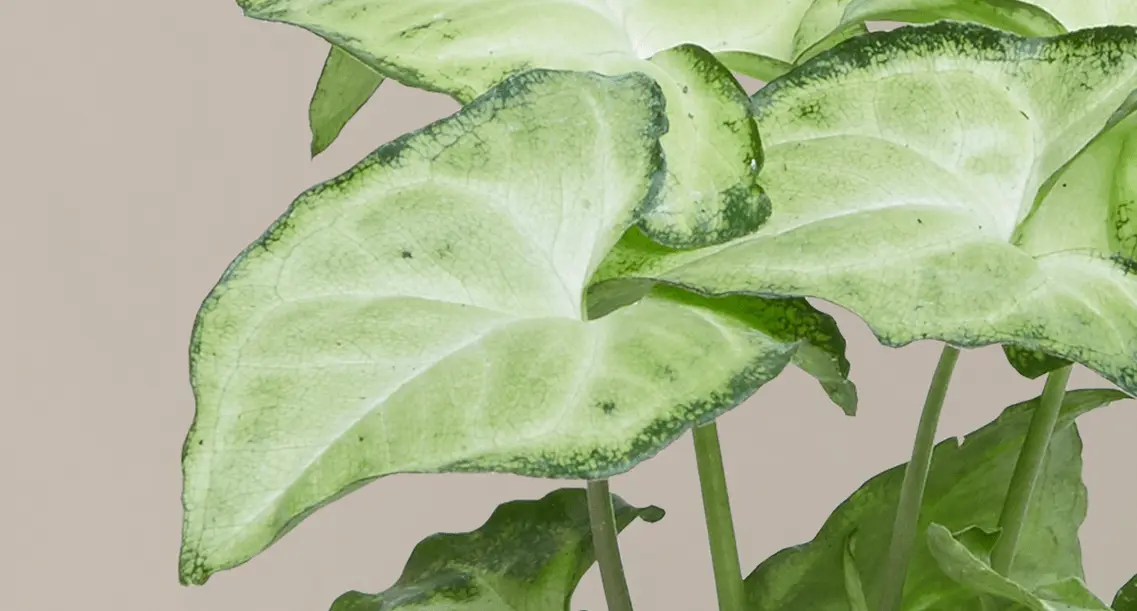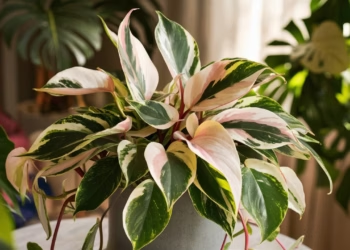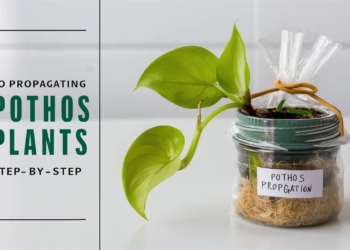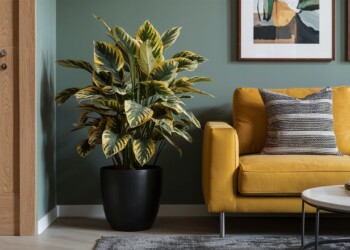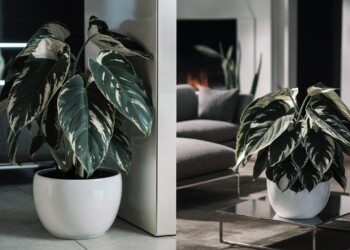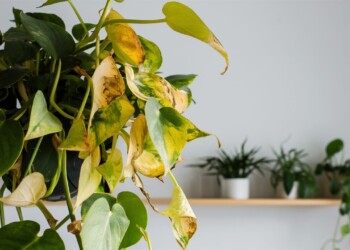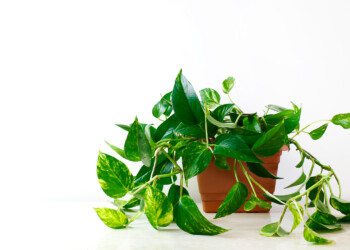Welcome, plant enthusiasts, to the lush world of arrowhead plant care indoor! If you’re seeking to elevate your indoor greenery game, look no further than the versatile and visually stunning arrowhead plant. Whether you’re a seasoned plant parent or a novice cultivator, this guide is your passport to success in nurturing and maintaining these exquisite botanical beauties within the cozy confines of your home!
Getting to Know Your Arrowhead Plant
Before we dive into the nitty-gritty of arrowhead plant care indoor, let’s take a moment to acquaint ourselves with this marvelous foliage. The arrowhead plant, scientifically known as Syngonium podophyllum, is a member of the Araceae family, hailing from the tropical regions of Central and South America. With its distinctive arrow-shaped leaves and a plethora of mesmerizing varieties, including the popular ‘Pink Allusion’ and ‘White Butterfly,’ this plant effortlessly adds a touch of elegance to any indoor space.
How do you care for an Arrowhead Plant indoors?
Now that you’re acquainted with your leafy companion let’s delve into the heart of arrowhead plant care indoor. Follow these essential tips to ensure your arrowhead plant thrives and flourishes within the cozy confines of your home:
1. Lighting
- Bright, Indirect Light: Arrowhead plants prefer bright, indirect light but can tolerate lower light conditions. Avoid placing them in direct sunlight, as this can scorch their delicate leaves.
- Adjusting Light Levels: If you notice your arrowhead plant’s leaves are turning pale or yellow, it may be receiving too much light. On the other hand, if the leaves become leggy or droopy, it could indicate insufficient light exposure. Adjust accordingly to find the perfect balance!
2. Watering
- Moderate Moisture: Keep the soil consistently moist but not soggy. Allow the top inch of soil to dry out between waterings to prevent overwatering, which can lead to root rot.
- Watering Frequency: During the growing season (spring and summer), water your arrowhead plant more frequently, reducing the frequency during the dormant period (fall and winter).
3. Humidity
- Humidity Requirements: Arrowhead plants thrive in humid environments, mimicking their native tropical habitat. Increase humidity levels by misting the leaves regularly or placing a humidifier nearby.
- Avoid Dry Air: Dry indoor air, especially during winter months, can lead to crispy leaf edges and overall decline in plant health. Keep the air moist to maintain lush foliage!
4. Temperature
- Warmth Lover: Arrowhead plants prefer temperatures between 60°F to 80°F (15°C to 27°C). Avoid exposing them to drastic temperature fluctuations or drafts, which can stress the plant.
- Winter Care: During colder months, protect your arrowhead plant from chilly drafts and maintain a consistent temperature to prevent shock.
5. Soil and Potting
- Well-Draining Soil: Opt for a well-draining potting mix rich in organic matter, such as peat moss or perlite. This ensures adequate aeration and prevents waterlogging.
- Repotting: As your arrowhead plant grows, repot it annually during the spring months to refresh the soil and provide ample space for root expansion.

Types of Arrowhead
Syngonium podophyllum boasts a diverse range of cultivars, each exhibiting unique foliage colors and patterns. Here are some popular varieties to consider for your indoor garden:
- ‘Bold Allusion’: Large leaves with light green and pink hues.
- ‘Cream Allusion’: Foliage with creamy centers and pinkish veins.
- ‘Exotic Allusion’: Pale green leaves with cream venations.
- ‘Pink Splash’: Deep pink leaves on green foliage.
- ‘Gold Allusion’: Heart-shaped golden yellow leaves with pink veins.
- ‘Snow White’: Compact vine with green leaves and white speckles.
- ‘Neon Robusta’: Shiny leaves with a dusky pink hue.

Propagating Arrowhead Plant
Syngonium podophyllum propagates easily from stem cuttings, making it simple to expand your plant collection or share with friends. Follow these steps to propagate your Arrowhead Vine successfully:
- Prepare the Cutting: Select a healthy stem section with attached aerial roots using sterilized pruning shears.
- Place in Water: Place the cutting in a glass of water, ensuring that the nodes are submerged.
- Root Development: Within a few weeks, roots will begin to develop from the nodes.
- Transplanting: Once the roots have strengthened, transplant the cutting into a suitable potting mix, maintaining adequate moisture levels.
Potting and Repotting Arrowhead Plant
Due to its vigorous growth habit, Arrowhead Vine may require regular repotting to accommodate its increasing size. Here are some guidelines for potting and repotting:
- Frequency: Repot annually for larger vines, or refresh potting media every spring and repot every other year to prevent root binding.
- Pot Selection: Consider using terracotta or clay pots to promote better drainage and prevent waterlogging.
- Potting Mix: Use a well-draining soil-based potting mix formulated for indoor plants to ensure optimal root health and growth.
Common Pests & Plant Diseases
While Arrowhead Vine is relatively resistant to pests and diseases, it may occasionally encounter issues when grown indoors. Here are some common pests and diseases to watch out for:
Pests
- Spider Mites: Tiny arachnids that feed on plant sap, causing leaf stippling and webbing.
- Mealybugs: Soft-bodied insects that secrete a waxy substance and feed on plant juices, leading to leaf distortion and yellowing.
- Aphids: Small, soft-bodied insects that cluster on new growth, causing leaf curling and stunted growth.
- Scale Insects: Hard or soft-bodied insects that attach to stems and leaves, draining plant sap and causing leaf yellowing and wilting.
Diseases
- Root Rot: Caused by overwatering, resulting in soggy soil and root suffocation.
- Powdery Mildew: Fungal disease characterized by white powdery growth on leaves, stems, and flowers.
- Fungal Leaf Spots: Brown or black spots on leaves caused by fungal pathogens, typically exacerbated by high humidity and poor air circulation.

Common Problems With Arrowhead Vine
If your Arrowhead Vine exhibits any of the following issues, here are some troubleshooting tips to address them:
Turns Pale
- Cause: Excessive exposure to direct sunlight.
- Solution: Move the plant to a location with less intense light to prevent leaf discoloration.
Leaves Turn Brown
- Cause: Underwatering or waterlogged soil.
- Solution: Adjust your watering schedule to maintain consistent moisture levels in the soil, allowing it to dry out slightly between waterings.
Won’t Bloom
- Cause: Arrowhead Vines are primarily grown for their foliage rather than flowers.
- Solution: Focus on providing optimal growing conditions to promote lush foliage growth, as flowering is rare indoors.

Congratulations on embarking on your arrowhead plant care indoor journey! By following the tips and tricks outlined in this guide, you’re well-equipped to nurture and pamper your leafy companions, fostering lush foliage and vibrant growth. Remember, every plant parent encounters challenges along the way, but with patience, dedication, and a sprinkle of green-thumb magic, your arrowhead plants will thrive and flourish, bringing joy and beauty to your indoor oasis. Happy gardening!
FAQs
How to keep an Arrowhead Plant bushy?
To keep an Arrowhead Plant bushy:
- Pruning: Regularly prune the plant to remove leggy growth and stimulate new growth. This helps maintain a compact, bushy appearance .
- Pinching: Pinch off growing tips to encourage branching and bushiness.
Should I mist my Arrowhead Plant?
Misting can provide a temporary moisture boost for your Arrowhead Plant and increase humidity levels. However, it’s not essential for its care. Using a humidifier or pebble tray is a more effective way to maintain humidity .
How much light does an Arrowhead Plant need?
Arrowhead Plants prefer bright, indirect light. They can tolerate lower light conditions but may become leggy with less light. Avoid direct sunlight to prevent leaf burn.
How often do I water my Arrowhead Plant?
Water your Arrowhead Plant when 50%-75% of the soil volume is dry. Keep the soil consistently moist but not waterlogged to prevent root rot .
